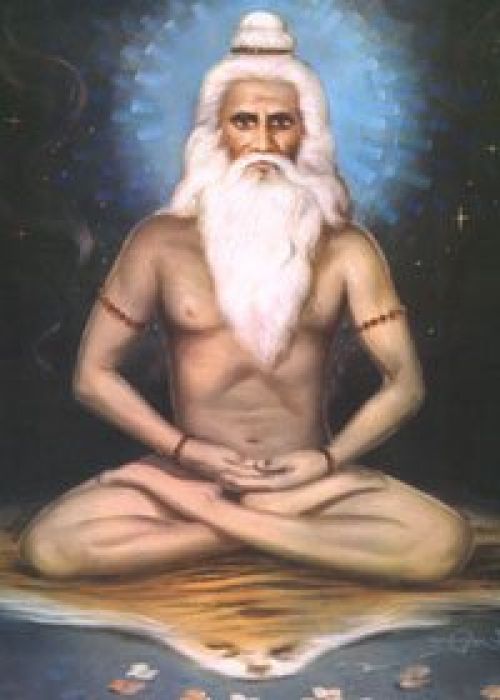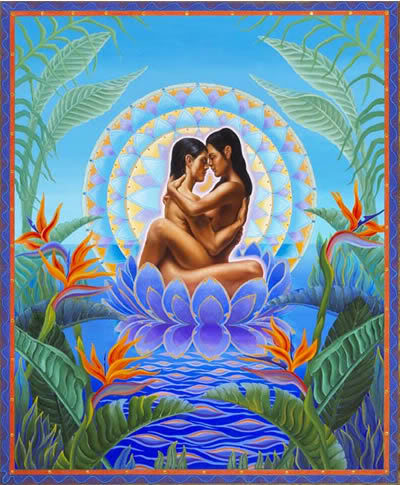In the Upanishads, the knowledge of the true nature of things and the meditation practices designed to remove the obstacles to achieving this knowledge took the place of rituals. So, yoga continued to emerge as a system involving certain psychophysical techniques. Maitri Upanishad, for example, perceives yoga as a complex consisting of the following six parts: Pranayama (extension of breath), Pratyahara (withdrawal of the senses), Dhyana (meditation), Dharana (concentration of mind), Tarka (logic) and Samadhi (higher level of concentrated meditation).
The spiritual teachings outside the Vedic tradition which occurred in the 6th century BC, namely Buddhism and Jainism established respectively by Siddhartha Gautama and Vardhamana Mahavira, had a significant impact as well. They strongly opposed the sacrifices, rejected the importance of caste and based their teachings on the principle of nonviolence (ahimsa). All this had led to a kind of reformation in Brahmanism itself, especially with regard to ethical aspects whereas the ideas of Buddhism became a state religion during the reign of the third king of the Mauryan dynasty, Ashoka.
The grand Indian epic Mahabharata was completed not later than the 4th century BC. The main line in this huge work (18 volumes) is the fratricidal war between the Pandavas and the Kauravas. Stories and many other passages dealing with different aspects of life in ancient India weave into the poem which is why the Mahabharata can be perceived as a sort of encyclopaedia. In the epic, we find many references to yoga and Samkhya but the poem Bhagavad Gita which was inserted during the 4th – 3rd century BC is the most important for yoga and for Indian spirituality. It presents the teachings of Krishna as told by him to Prince Arjuna. On the eve of a battle, when the armies had already been formed, Arjuna was seized with indecision and doubt. Seeing the futility of the impending bloodshed he refused to fight. In response Krishna introduced him to the philosophy of different types of yoga, thus identifying the three major paths (margi) - bhakti yoga, karma yoga and jnana yoga.
Classical yoga

Patanjali
The six main schools (darshan) of Hindu philosophy, one of which is yoga, were established at the beginning of our era. Each school was systematized in short aphorisms called sutras (which means “thread”).
The remarkable role of sage Patanjali (who lived in the 2nd century CE at the latest) lies in the fact that, by writing Yoga Sutra, he had laid the foundations of classical yoga and its eight stages. Numerous reviews of the sutras appeared later on.
The system set out in the sutras and their comments is known as classical yoga or raja yoga (royal yoga). The principles drawn up in the sutras by Patanjali are rightly considered as the common foundation for every yoga practice or variety.
Postclassical yoga and tantra
 Tantra is known in the West as a system of practices for making love but they constitute only a small part of its practices.
Tantra is known in the West as a system of practices for making love but they constitute only a small part of its practices.
Over the centuries, many varieties of yoga had been established after Patanjali.
Famous Vedanta and Yoga teacher Sankara (788-822) played a crucial role in Indian spirituality as a whole. Along with Nagarjuna (Buddhist thinker, 2nd century CE ), he was one of the greatest minds in Indian and world history. In his short life he was able to present the philosophy of Advaita Vedanta in a remarkable way and to breathe new life into Vedic thought. Sankara left his insightful comments on each of the three main pillars of Vedanta - the Upanishads, the Bhagavad Gita and the Brahma Sutra. The Swami Order with its 12 divisions founded by him is still playing a significant role in spiritual life.
The cultural and philosophical tradition of Tantrism which had gathered momentum after the 4th century CE had a powerful influence on yoga. It marked all major Indian religions and often created quite exotic incarnations of them. The philosophy and practice of Tantrism are presented in texts called tantras.
Tantrism is based on the idea of merging the passive "male" principle of Shiva with the creative "female" aspect of the Absolute, worshiped as Shakti. The key to understanding these teachings is precisely the worship of the female principle. It is said that the path of tantra is particularly suitable for the dark age of Kali Yuga.
Tantric practices embody the idea of overcoming the pairs of opposites through their merger. They involve complex rituals charged with rich symbolism. For example, they widely use mantras and yantras - formulas representing certain forces in the nature of the language of sound and of geometric shapes respectively.